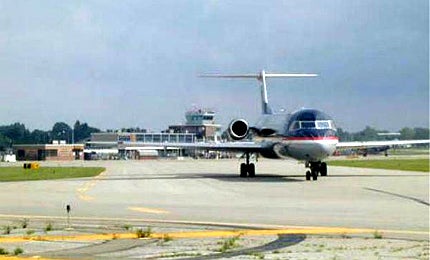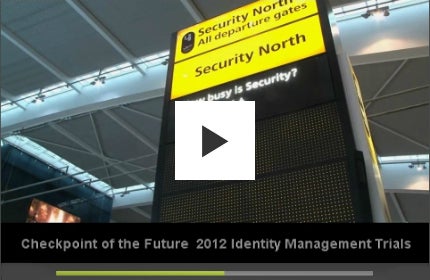Check out our video feature here
Erie International Airport serves the city of Erie, which is the fourth largest city in the state of Pennsylvania, with a population of more than 101,807. The airport is spread across a land area of 415 acres and lies 733ft above sea level. It is located at a distance of 10.46km from the city.
The airport provides 19 scheduled direct flights to five major destinations everyday through four airlines. On average, the airport handles 900 passengers and 120 aircraft movements a day.
Erie Regional Authority is the operator of the airport. It is a self supported airport, obtaining capital investments from charges paid by passengers for using the facilities, surplus revenues, revenue bonds and state and federal grants as part of the Federal Airport Improvement Programmes. In 2004, the airport provided an economic boost of $241m to the region.
Development / expansions of the Pennsylvanian airport
Erie Airport was a small airfield in the 1920s. In 1925, it was licensed as a commercial airport, making it one of the earliest airports in the nation to receive a commercial license. In April 1936, the federal government approved a Class A-1 airport for the region. Developments to turn the airport into a full fledged facility started in 1936, under the Works Projects Administration. A hard surface runway and a hangar were constructed.
In 1947, an instrument landing system (ILS) was installed on the runway. A second ILS system was installed in December 1951.
Construction of a $6.6m terminal building started in October 1956 and was completed in September 1958. The airport’s four storey control tower was inaugurated in December 1957. The north-south runway, concrete loading apron for the new terminal building, three new taxiways and two parking areas were completed in April 1958.
An emergency equipment building, equipped with snowploughs, snow blowers and a foam fire truck, was opened in 1960. The US customs service building was built in 1968, with which the airport met international classification. A $35,000 baggage claim area was constructed in 1970.
A $0.8m runway extension project was started in May 1973. The runway was extended by 500ft to increase its total length to 1981.2m (6500ft). A 24.99m (82ft) radar weather tower worth $150,000 was installed at the airport in August 1977.
In 1990 an additional ticket counter space was added, with a cost of $325,000, to the west side of the terminal building. The west end of the terminal was expanded in 1991 to include a US customs office.
Realignment and renumbering of taxiways, new signage for the entire field and other works were completed between 1992 and 1993. The terminal main lobby was renovated and a new baggage claim area and a new baggage mark up area were installed in 1999 and 2000. Few improvements were made to the parking area and a new car rental facility was opened in 2001.
Erie International Airport terminal details
The airport terminal has one concourse and an aircraft parking apron with an area of 18395m². There are seven gates to the terminal building, of which three are dedicated for passenger boarding. The terminal building also offers free Wi-Fi services for passengers. Various rental car desks, a public seating area, airline ticket counters, baggage screening areas, a restaurant lounge and outside pet relief areas are included in the terminal building. The parking area of the airport has a capacity to provide 923 public spaces.
Runways at IATA: ERI
The airport has two runways, namely the East-West Runway 6/24 and North-South Runway 2/20. The runway 6/24 is 6,500ft long and 150ft wide. The 2/20 runway is 3,530ft long and 150ft wide. The airfield has nine taxiways which are currently operational.
A 1,920ft extension was planned for runway 6/24 in November 2009. This extension was planned to increase the runways handling capacity, large plain handling compatibility and to prevent weather related delays and cancellations.
The bidding process for the first phase of the runway extension project started in mid-2010. The $83m project was completed in November 2012.
Related content
Washington Dulles International Airport, United States of America
As befits the airport of the capital city of the USA, Washington Dulles International Airport is an impressive facility, which is situated around 26 miles from downtown Washington DC on an 11,830-acre site in the state of Virginia (Loudoun and Fairfax Counties).
JFK International Airport (JFK/KJFK), United States of America
In 1999, American Airlines began an eight-year programme to build the largest passenger terminal at John F Kennedy (JFK) International Airport, New York.
Video feature: securing IATA’s Checkpoint of the Future
IATA’s Checkpoint of the Future programme promises to change the face of airport security, emphasising a differentiated screening system that makes use of biometrics and passenger data. Read more here.









